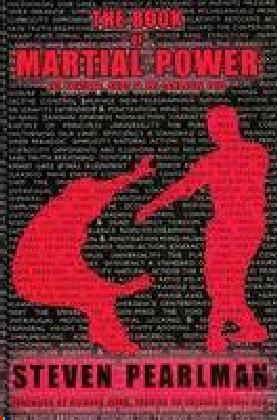
The Book of Martial Power: The Universal Guide to the Combative Arts
January 15, 2013
“…we must approach martial arts from the perspective of principles, and we must do so uncompromisingly…if we are not acting with principles, principles will still act on us! One way or another, principles do not merely have some effect on technique, principles govern everything that happens . We can harness their power or be at their mercy.” from The Book of Martial Power
 The most important thing I have ever learned from my teacher is the essential importance of principles in martial arts. This is a lesson he drills into us and that permeates Wing Chun as a style.
The most important thing I have ever learned from my teacher is the essential importance of principles in martial arts. This is a lesson he drills into us and that permeates Wing Chun as a style.
I will go so far as to say it is the essential idea of Wing Chun.
I’ve just started reading Steven Pearlman’s 2006 book The Book of Martial Power (at my Sifu’s recomendation) and I find that this is his book’s thesis.
Pearlman’s path resembles mine and that of many other martial artists. He had a goal – learn a martial art. He went to a series of teachers who ultimately confused and disappointed him. They taught him systems that were not only ineffective but internally inconsistent.
Except for the lucky few who stumble upon excellent teachers in excellent and clear-eyed systems, most of us have experienced this dilemma. You study and train in a school teaching an art you begin to suspect doesn’t really work. Its a bummer!
Then, after a lot of research and soul-searching, we start to understand what we are really looking for and what it might look like. If we are lucky, we find it. Something that understands structure, aggression, timing, angle, position. These are the subjects of system which work.
My teacher says that all arts look very similar in execution in their highest expressions. High-level fighters have the same issues and work on the same problems. I’m only fifty pages into Pearlman’s book, but I like what I hear and I appreciate the laser focus he recommends.
Once you’ve found a coherent, intelligent system, the next step is to set goals and a training direction. Pearlman starts with a series of logical arguments about what we should concentrate on. Like a Socratic philosopher, he drives home his logic.
Its better to move toward economy than a lack of economy. If we “prefer fighting well to fighting poorly” then we must “prefer fighting exceptionally to fighting moderately well.” If you accept this, the other arguments follow. Its a syllogism. He follows this reasoning to reach what he calls “The Pure Objective,” a clean training direction for all martial artists:
1. Victory must be instantaneous.
2. Victory must be effortless.
As he points out, there is no argument that fighting should take a “long time and involve a lot of work.” So our pure goal must be the above.
I’ll write more on this excellent book as I progress.